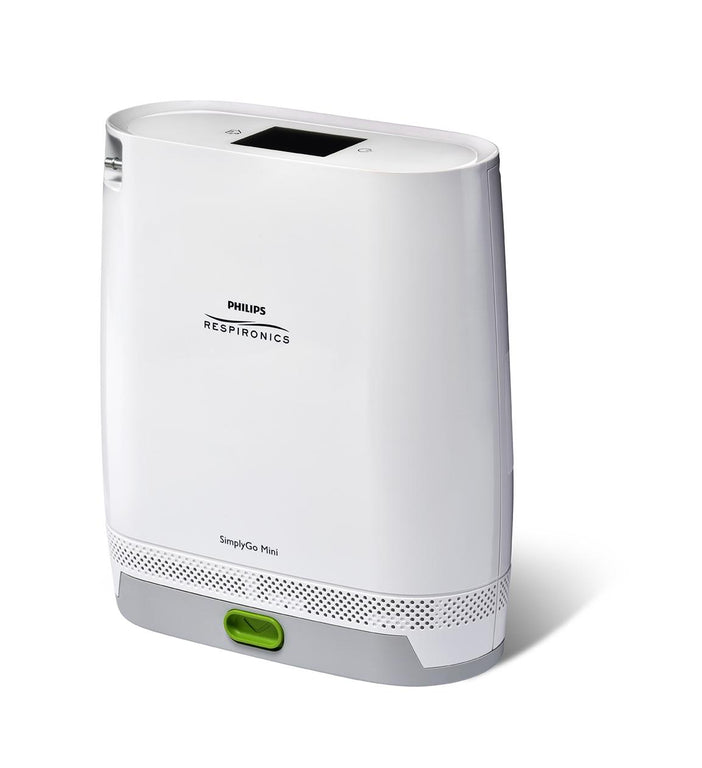
How to Buy a Portable Oxygen Concentrator with No Prescription?
One of the most asked questions of oxygen patients is 'how to buy a portable oxygen concentrator with no prescription'. If you are wondering about the answer, browse through this article to find out!
How to Buy a Portable Oxygen Concentrator With No Prescription?
To purchase a portable oxygen concentrator, you usually need a prescription from your doctor. You will have to personally consult with your physician to acquire the prescription you need to buy one.
Do note that purchasing such a concentrator has potentially adverse health consequences. It is highly advisable and far safer to get a prescription instead of settling with non-medical grade concentrators.
A simple visit to Amazon will provide you with hundreds of options. Just searching portable oxygen concentrators on the search bar will yield countless results.
You can do the same with other sites like eBay and Walmart. However, be aware that some portable concentrators you will get from these sites are non-medical grade. It means that they are not FDA-approved and medically tested.
Just as not everyone should be using a portable oxygen concentrator, not all portable concentrators are safe for medical use.
Medical Grade vs. Non-Medical Grade Portable Oxygen Concentrator
You might wonder what’s the difference between medical and non-medical grade POCs. Here is a detailed explanation of their difference.
What is a Medical Grade Portable Oxygen Concentrator?
A medical-grade portable oxygen concentrator is a user-friendly medical oxygen device that offers high levels of pure oxygen (>95%) at every flow setting. To purchase one, you will need to present a prescription.
Medical-grade concentrators are all FDA-approved. By filtering and concentrating atmospheric oxygen molecules, they provide 90-95% pure oxygen to patients.
Pros
- FDA-approved
- High purity rate
- Designed for medical use
- Bigger filters
- Works continuously
- Safe to use
Cons
- Needs a prescription, which might be a hassle for some
- Might be pricier
What is a Non-Medical Grade Portable Oxygen Concentrator?
Unlike medical-grade ones, this concentrator does not need a medical prescription. It is not FDA-Approved, therefore, not advised for medical use. This concentrator may not be able to sustain high oxygen purity. Moreover, there is an increasing number of reported cases of black fungus in patients with COVID.
Non-medical POCs also have smaller water containers, which leads to a variable oxygen flow rate. The medical device only works for 30 minutes in one go.
Pros
- Easier to obtain
- Tends to be cheaper
Cons
- It can lead to severe health problems
- It can carry infection (black fungus)
- Have compact filters and need frequent replacement
- Not FDA Approved
Why Do You Need a Prescription to Purchase a Portable Oxygen Concentrator?
The FDA aims to ensure that all oxygen supplies, including portable concentrators, are appropriately distributed to oxygen patients with genuine medical needs, hence requiring a prescription.
Patients with such conditions include those with pneumonia, asthma, respiratory distress syndrome, and chronic obstructive pulmonary disease (COPD).
A prescription for a portable concentrator is much like any prescription for any additional medical treatment. It is patient-specific, therefore, tailored to the exact oxygen needs of each patient.
This ensures that no overdosing or underdosing of oxygen happens.
How Do You Obtain a Prescription for an Oxygen Concentrator?

Consult your doctor first to ensure that you need an oxygen concentrator. Getting a prescription requires undergoing all necessary tests to evaluate your blood oxygen level. They may even test and examine you while exercising and sleeping to see if there are any changes. Among the standard tests is the ABG test or arterial blood gas.
Your doctor will write the prescription defining your oxygen level needs with the results. The needs include the oxygen dosage, often written in LPM or Liter per minute. Some doctors even have the concentrator type they feel best suits you.
Dangers of Buying a Non-Medical Grade Portable Oxygen Concentrator
There are hundreds of non-medical grade portable oxygen concentrators on Amazon. Many oxygen therapy patients are forced to turn to them instead as they are cheaper and more affordable than medical-grade ones. If you are planning to purchase one, be sure to educate yourself first on the dangers surrounding them.
Not FDA Approved
Among the most significant concerns about non-medical grade concentrators is that they are not FDA approved. Many might wonder what the Food and Drug Administration has to do with oxygen? Oxygen is actually a drug—meaning it needs to be prescribed for specific indications.
Like any other drug, receiving too much can lead to dangerous results. Accordingly, receiving too little would defeat the purpose.
Potential Health Problems
As teased, non-medical oxygen concentrators can lead to severe health problems. If you don't have a medical prescription, you would not know the exact amount of oxygen dosage you need nor the concentrator type you should go for. You could either be receiving too much or too little—either way is dangerous for the body.
How to Choose a Portable Oxygen Concentrator Based on Your Prescription?
Your prescription is not just used to buy a medical-grade oxygen concentrator. You may also use it to select the best-suited POC for your needs. Here is a brief explanation of how.
Delivery Method/Flow
Most doctors also include the type of concentrator they feel would best fit you in your prescription. Whether it be a portable oxygen concentrator or a home/stationary unit. It also tells you the type of delivery you need—continuous flow or pulse flow.
Continuous flow concentrators give you constant and steady supplemental oxygen. Contrary to that, pulse dose concentrators deliver short bursts of oxygen and are often triggered by the patient's inhalation.
Flow Settings
Your medical prescription will include your specific oxygen level needs. It will consist of the dosage of oxygen you need, often written in liters per minute (LPM) format.
Be sure that the oxygen machine of your choice can give the right amount of oxygen your body requires. It is necessary to note that a prescription of 2 LPM is not the same as a 2 flow setting. Ask your doctor to know what flow setting best matches your oxygen needs.
Top 5 Medical Grade Portable Oxygen Concentrators
If you have a prescription or can get one, don't settle for a non-medical grade one! Your health should be your top priority. Therefore, you should use oxygen devices that are tested and proven. Here are a few medical-grade concentrators that you can consider!
1. Inogen One G5
Inogen One G5 is a top-notch medical-grade POC unit that is an ideal solution for patients suffering from mild respiratory symptoms and distress with its oxygen saturation levels of 88-92%. It is an innovative and reliable oxygen device with supreme quality and technology. It has a "one-size-fits-all" approach capable of covering all your supplemental needs.
It features extended battery life and advanced flow settings to help accommodate users' varying needs. These features were the primary updates introduced on G5 with an intent to increase its ability to provide more oxygen.
2. Arya Portable Oxygen Concentrator
Arya's POC can offer you the oxygen you need to treat your respiratory condition without sacrificing parts of your life that you enjoy. This concentrator has a compact and sleek device that you can easily throw over your shoulder, giving you the freedom and independence you sought for. You can now safely travel places with ease.
Despite its small and quaint body, it has groundbreaking features that easily keep up with more prominent names and brands. It has a long-lasting battery, pulse flow settings ranging from 1 to 5, and a convenient user interface with LCD screen.
3. GCE Zen-O Lite
GCE is a worldwide leader in healthcare equipment, including oxygen concentrators. Probably the flagship portable concentrator of the brand is GCE Zen-O Lite. This medical-grade device offers unique benefits that can help patients regain their freedom. It has a maximum flow setting of 5 and puts out about 1,050 milliliters per minute of oxygen.
Zen-O Lite was designed to provide COPD patients with an active lifestyle. With 5.5 pounds, you can carry this device anywhere and everywhere!
4. CAIRE FreeStyle Comfort
CAIRE FreeStyle Comfort is a medical-grade oxygen device that boasts 5 different and powerful pulse dose settings. It can offer up to 1,050 milliliters of oxygen per minute at its highest flow setting. It also features UltraSense breath detection technology. The device maintains a consistent and steady amount of oxygen even if your breath rate changes.
It is lightweight and compact, paired with an ergonomic design that makes it comfortable to wear or carry!
5. Respironics SimplyGo Mini
Respironics SimplyGo Mini can let you take your oxygen therapy on the go. With this small and compact medical-grade device, you can quickly go shopping, experience road trips, and take vacations with a consistent supply of oxygen in your hand.
Weighing only 5 pounds, this device can give you up to 12 hours of battery life. It also has a user-friendly touchscreen that provides intuitive operation.
FAQs About Portable O2 Concentrator Prescriptions
Below are some FAQs about portable oxygen concentrator prescriptions. Read through these to see if they answer your own questions!
Can you get portable oxygen over the counter?
You may be able to get a non-medical grade portable concentrator on Amazon, eBay, or other e-commerce sites. Though, be aware that these portable concentrators are not FDA approved nor cleared by any professional. They are not allowed to sell anything that requires a prescription.
Why do some oxygen concentrators require a prescription?
All oxygen concentrators require a prescription. Using one without proper documents or even your doctor's guidance can lead to dangerous health problems. A potential consequence is developing oxygen toxicity wherein you receive too much oxygen, leading to lung damage.
What happens if you use oxygen when you don't actually need it?
Using oxygen when you don't technically need it is dangerous. Too much oxygen in the body is harmful and could lead to life-threatening consequences. A high oxygen concentration can lead to an overproduction of free radicals in the lungs. If left unchecked, these radicals can kill or permanently damage your lungs.
Can oxygen be prescribed?
Yes. Your doctor will issue you a prescription that spells out how much oxygen your body needs per minute and when you need to receive it. You can use the prescription to buy a medical-grade portable concentrator from a reputable seller.
How to get a prescription for oxygen?
You can get an oxygen prescription directly from your doctor. Simply set up an appointment or visit your doctor. They will provide you with the prescription if they deem it necessary to get extra supplemental oxygen.

Where To Buy Your Own Medical-Grade Portable Oxygen Concentrator?
Non-medical grade concentrators might be more convenient for most as they don't need prescriptions and are generally cheaper. What most don't seem to know is the dangers of using one. Note that non-medical grade POCs are not advised for medical use and could potentially lead to harmful consequences.
If you’re not sure which medical-grade portable oxygen concentrator to buy, here are some guides to get you started:
- Learn how to choose a portable oxygen concentrator for your unique needs
- We compared our best portable oxygen concentrator products here
- Go through this list of the lightest portable oxygen concentrators
- Check out this list of our cheapest portable oxygen concentrators
- Find out most quiet portable oxygen concentrators here
- Know the smallest portable oxygen concentrators in the market







Leave a comment